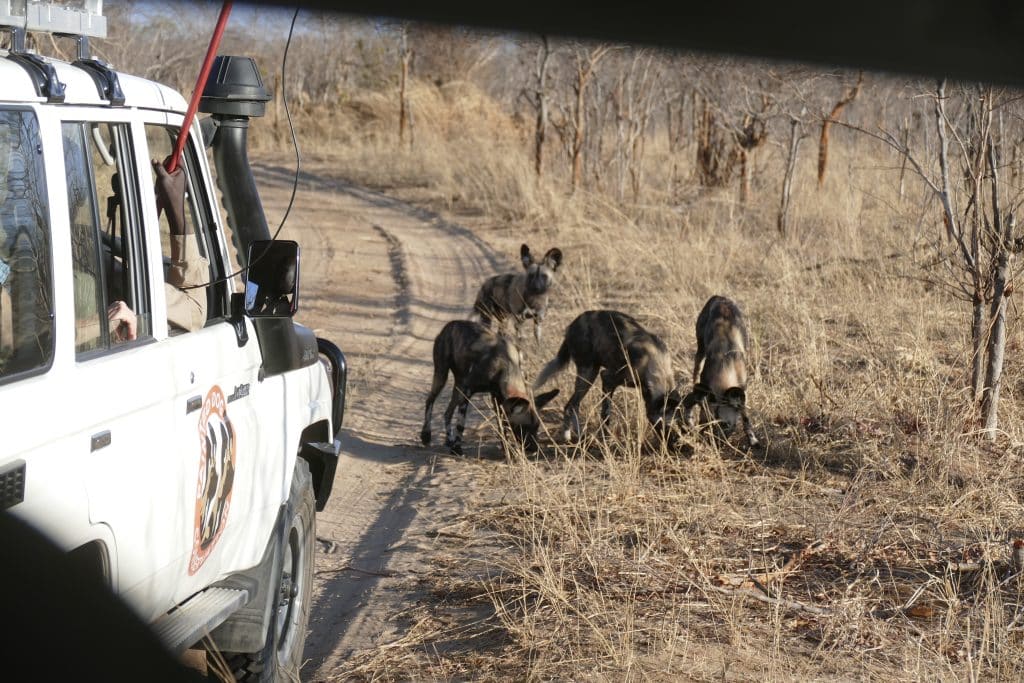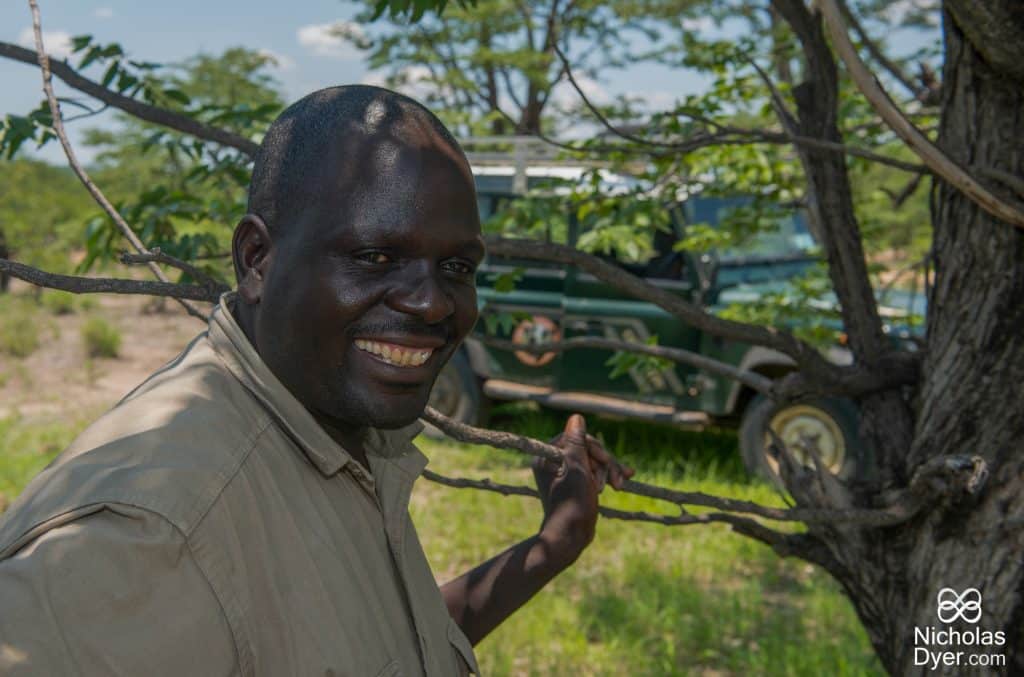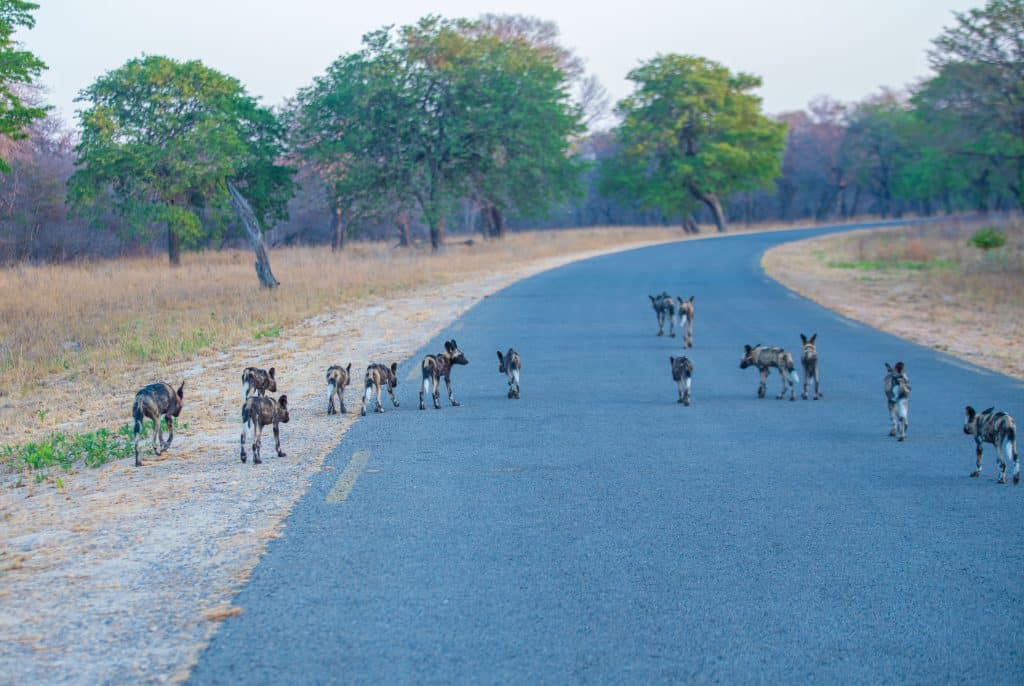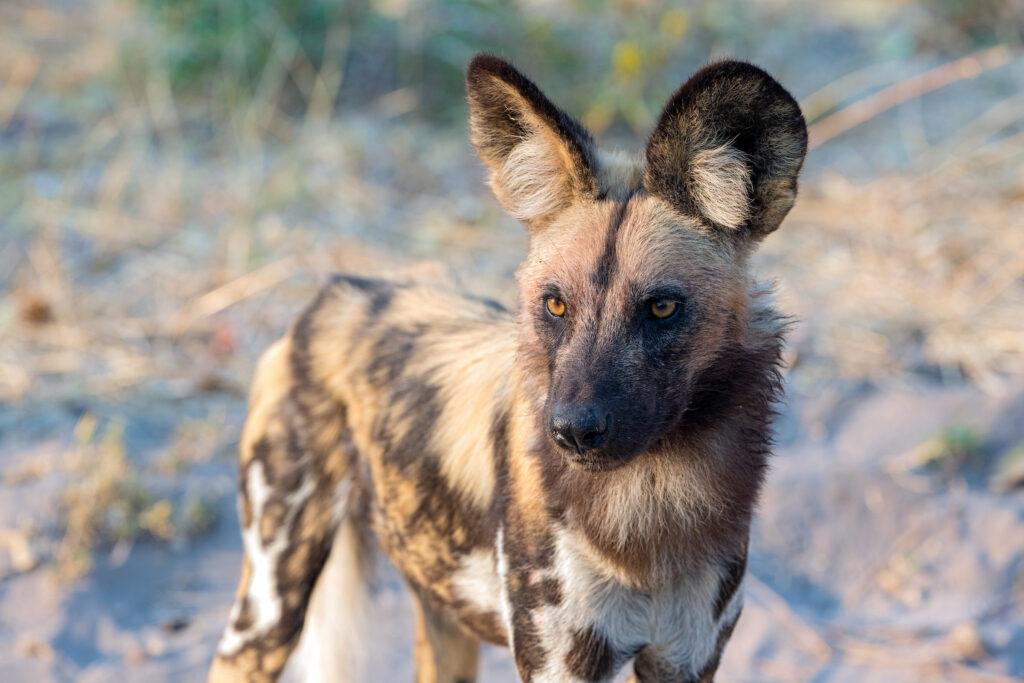Welcoming New Painted Dog Packs to Hwange
Jealous Mpofu adjusted his grip on the radio telemetry antenna jutting out of the window. The midday sun caused the truck’s metal door to sting his arm, but he ignored the discomfort. As PDC’s Chief Tracker and Field Manager, Jealous uses his extensive tracking skills to help Painted Dog Conservation (PDC) trace every inch of the buffer zone between Zimbabwe’s Hwange National Park and communal lands, often camping in the bush for days while monitoring the area’s fragile painted dog population. As the shadows slowly crawled across the dirt road, several dogs from the newly-formed Umkhonto pack finally emerged from the grass. Recently, Hwange’s buffer zone has become home to five painted dog packs—the most ever seen in the area—and PDC is ramping up their efforts to keep these new dogs safe.
In the past 25 years, there have never been more than two packs recorded in the buffer zone outside Hwange National Park at a given time. Jealous is very familiar with the native dogs—the Mpindothella and Bachijwa packs—but in early 2023, he discovered that three new packs had moved in, which PDC named the Umkhonto, Kingsbury, and Thutshu packs. While this was cause for celebration, each pack’s territory overlapped the others within the buffer zone, which is roughly 1.5 million acres—larger than Grand Canyon National Park. Jealous and his team had to quickly familiarize themselves with the new dogs and broaden their efforts to protect them.
Hwange’s buffer zone is somewhat paradoxical. On one hand, this sudden influx of packs indicated that painted dogs from surrounding areas were recognizing the buffer zone as safe territory. This is largely due to the quarter century that PDC has spent reducing threats to the dogs and prey species across this landscape. On the other hand, bushmeat poaching still occurs within the zone and represents the greatest threat to painted dogs despite PDC’s regular anti-poaching unit patrols, which remove thousands of snares every year. Vehicle traffic also poses a danger to the packs that have settled close to the few roads in the area. PDC needed to escalate their work to give the new dogs the best chance at survival in their new home.
To protect the growing population of dogs living along Hwange’s border, PDC added eight new scouts to their core anti-poaching unit, bringing the unit total to 25. They have also increased engagement with nearby communities, enlisting over 140 local people to assist with anti-poaching patrols to ensure they can cover every pack’s territory, particularly near poaching hotspots. In the last six months, the unit has conducted over 1,300 patrols and removed over 3,300 snares. Jealous and his trackers also utilize radio and GPS collars to monitor the two native packs, with plans to collar the new packs as soon as possible. And to reduce traffic fatalities among the dogs, PDC successfully lobbied the government to install speed limit signage and rumble strips on the roads.
Every dog matters to Jealous. He spends countless hours following them, learning their individual behavior, and thinks of them as his own. By adapting to a rare population jump and expanding their reach, PDC is providing long-term protection for more painted dogs than ever before, which will foster further growth for Jealous’ new canine neighbors.








